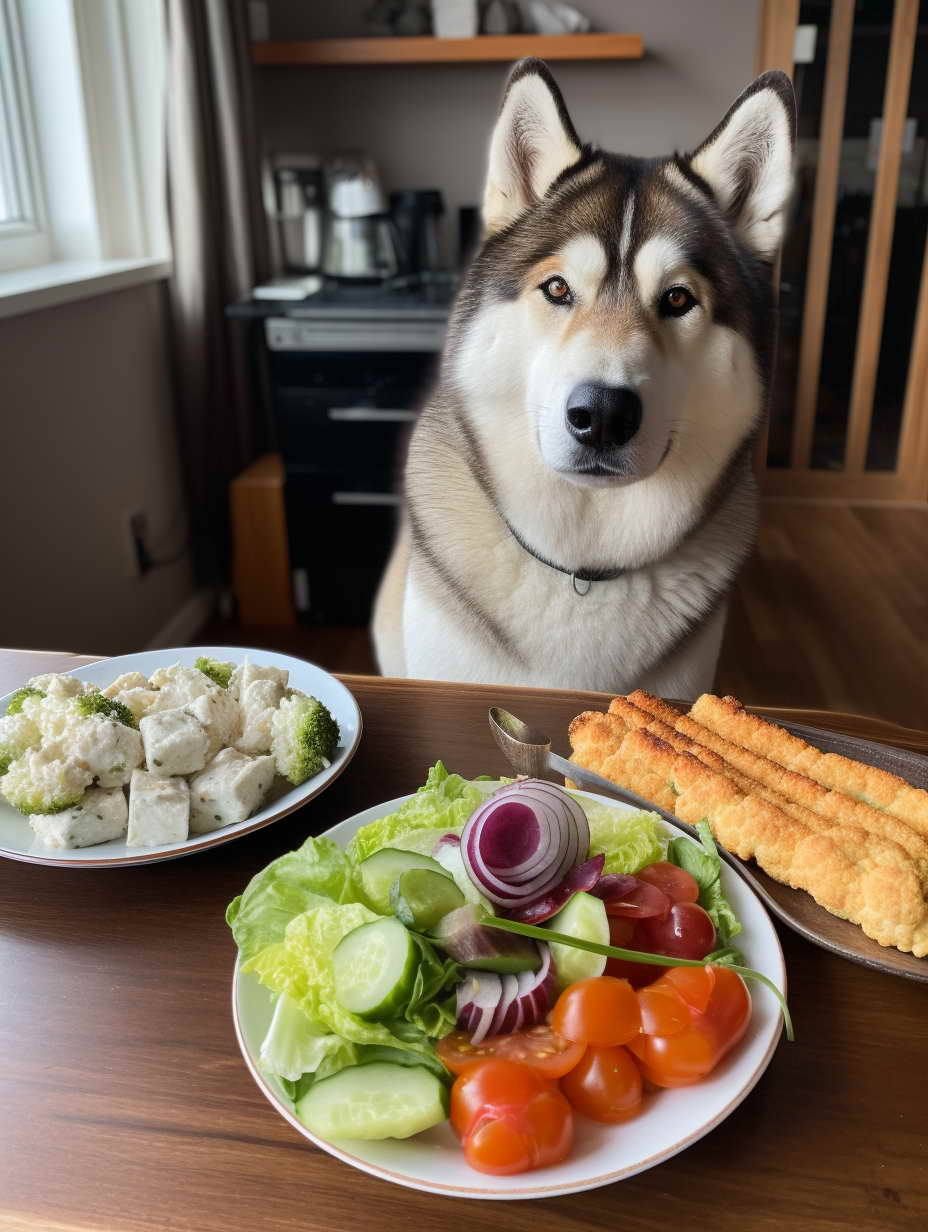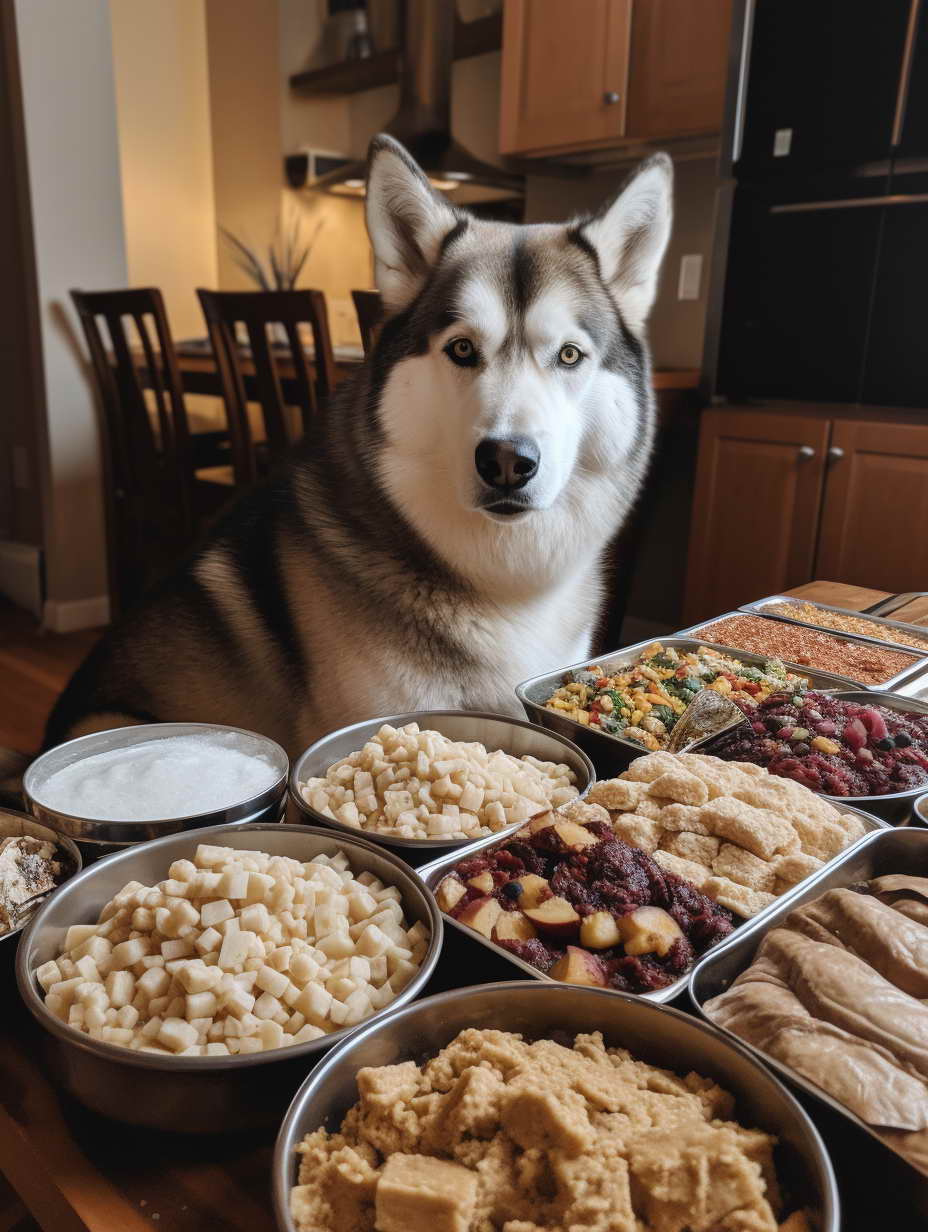Can You Make Your Own Dog Food: A Comprehensive Guide
Introduction
In a world where pet owners are increasingly concerned about the quality of the food they provide for their furry friends, the question of whether you can make your own dog food has gained significant traction. This comprehensive guide aims to answer this query and provide you with all the information you need to make an informed decision about crafting homemade meals for your canine companion.
Is Homemade Dog Food a Viable Option?
In this section, we will explore the concept of homemade dog food and its suitability for your pet.
Understanding the Nutritional Needs of Your Dog
Before delving into the world of homemade dog food, it’s crucial to understand the nutritional requirements of your four-legged friend. Dogs, like humans, need a balanced diet to thrive.
Benefits of Homemade Dog Food
Homemade dog food offers several advantages, including:
- Quality Control: When you make your own dog food, you have full control over the ingredients, ensuring that only high-quality, nutritious components are used.
- Customization: Tailoring your dog’s diet to their specific needs, whether it’s for weight management or allergies, is easier with homemade food.
- Avoiding Fillers: Commercial dog food often contains fillers that may not provide the best nutrition for your pet. Homemade options allow you to eliminate these fillers.
Potential Challenges
While homemade dog food has its perks, there are also some challenges to consider:
- Time-Consuming: Preparing homemade meals can be time-intensive, especially if you’re cooking for a larger dog or multiple pets.
- Nutritional Balance: Ensuring that your homemade meals meet all of your dog’s nutritional needs can be a bit complex.
- Cost: High-quality ingredients can be pricey, potentially making homemade dog food more expensive than commercial options.

Can You Make Your Own Dog Food Safely?
Ensuring the safety of the dog food you prepare at home is of paramount importance. In this section, we will delve deeper into the key considerations and best practices for making homemade dog food safely.
Consultation with a Veterinarian
Before you embark on the journey of crafting homemade dog food, it is strongly recommended to consult with a qualified veterinarian. Your veterinarian is your trusted partner in safeguarding your dog’s health and well-being. Here’s what you can expect during this consultation:
1. Dietary Assessment
Your veterinarian will conduct a comprehensive assessment of your dog’s dietary needs. This includes considering your dog’s age, breed, size, activity level, and any underlying health conditions. This initial assessment helps in tailoring a diet plan that suits your dog’s specific requirements.
2. Nutritional Guidance
Based on the assessment, your veterinarian will provide you with valuable nutritional guidance. They will recommend the types and quantities of ingredients that should be included in your homemade dog food recipes. This guidance is crucial for ensuring your dog receives a balanced and healthy diet.
3. Addressing Health Concerns
If your dog has any health concerns or dietary restrictions, your veterinarian will take these into account. For instance, if your dog has allergies or sensitivities, your vet will suggest suitable alternatives and potential allergen avoidance strategies.
4. Regular Check-ups
During the preparation of homemade dog food, your veterinarian will schedule regular check-ups to monitor your dog’s health and adjust the diet plan as necessary. This ongoing support helps ensure that your dog’s dietary needs are consistently met.
Recipe Selection
Selecting the right recipes for your homemade dog food is crucial for meeting your dog’s nutritional requirements. Here’s how you can make informed choices:
1. Reputable Sources
Opt for recipes from reputable sources. Trusted veterinary websites, books authored by veterinary nutritionists, and established pet food companies are reliable places to find well-balanced and safe recipes.
2. Professional Guidance
Consider working with a veterinary nutritionist. These specialists can create custom diet plans for your dog, taking into account their unique needs. A nutritionist can also help you modify existing recipes to suit your dog’s dietary requirements.
3. Nutritional Standards
Ensure that the recipes you choose meet the nutritional standards set by recognized authorities. These standards are designed to ensure that your dog’s diet provides all the essential nutrients in the right proportions.
Ingredient Selection
The ingredients you use in your homemade dog food play a pivotal role in ensuring its safety and nutritional value. Here’s what to keep in mind:
1. High-Quality Protein
Select high-quality sources of protein, such as lean meats (e.g., chicken, turkey, beef), fish, or eggs. These protein sources should be cooked thoroughly to eliminate the risk of harmful bacteria.
2. Variety of Vegetables
Incorporate a variety of vegetables and fruits into your recipes. Carrots, peas, sweet potatoes, and leafy greens are excellent choices. These ingredients provide essential vitamins and minerals.
3. Grains and Carbohydrates
Include grains like brown rice, quinoa, or oats for a source of carbohydrates. These grains should be cooked to improve digestibility.
4. Avoid Harmful Foods
Be aware of foods that are toxic to dogs. Chocolate, grapes, raisins, onions, garlic, and certain artificial sweeteners (like xylitol) should be strictly avoided.
Safe Food Handling
Practicing proper food handling is essential to prevent contamination and ensure your dog’s safety. Follow these guidelines:
1. Storage
Store ingredients properly to maintain their freshness and prevent spoilage. Use airtight containers and keep perishable items refrigerated or frozen.
2. Cleanliness
Maintain cleanliness in your kitchen and cooking utensils. Wash your hands thoroughly before and after handling food, and clean all equipment used in food preparation.
3. Cross-Contamination
Prevent cross-contamination by using separate cutting boards and utensils for raw meat and other ingredients. This reduces the risk of harmful bacteria spreading to the dog food.
Portion Control
Proper portion control is essential to prevent overfeeding or underfeeding your dog. Here’s how to manage it effectively:
1. Follow Serving Recommendations
Adhere to the serving recommendations provided in your chosen recipes. These guidelines are typically based on your dog’s size and activity level.
2. Monitor Your Dog’s Weight
Regularly monitor your dog’s weight and adjust portion sizes as needed. Overfeeding can lead to obesity, while underfeeding can result in nutritional deficiencies.
By following these safety guidelines and best practices, you can confidently create homemade dog food that is not only nutritious but also safe for your beloved canine companion. Always prioritize your dog’s health and well-being, and consult with your veterinarian for expert guidance throughout the process.
Homemade Dog Food Recipes
Creating homemade dog food can be a rewarding endeavor, providing your furry friend with nutritious and delicious meals. Here, we’ll explore two wholesome recipes that you can prepare for your canine companion. These recipes are designed to meet your dog’s dietary needs while ensuring their safety and enjoyment.
Recipe 1: Chicken and Rice Delight
This recipe is not only simple to make but also provides your dog with a balanced meal of protein, carbohydrates, and essential nutrients.
Ingredients:
- 2 cups of cooked chicken (skinless and boneless)
- 1 cup of brown rice
- 1/2 cup of peas
- 1/2 cup of carrots
- 1 tablespoon of olive oil
Instructions:
- Cook the Brown Rice: Begin by cooking the brown rice according to the package instructions. Brown rice is a great source of carbohydrates and fiber for your dog.
- Prepare the Chicken: While the rice is cooking, cook the chicken thoroughly. It’s important to use skinless and boneless chicken to avoid any potential choking hazards. You can either boil or grill the chicken until it’s fully cooked. Once done, shred it into smaller, manageable pieces.
- Steam or Boil Vegetables: Steam or boil the peas and carrots until they are tender. These veggies provide essential vitamins and minerals to your dog’s diet.
- Combine Ingredients: In a large mixing bowl, combine the cooked chicken, cooked rice, and steamed vegetables. Add a tablespoon of olive oil for some healthy fats and a shiny coat.
- Serve: Once the mixture has cooled down to a safe temperature, serve it to your dog. Make sure it’s not too hot to avoid any burns. Your pup will surely enjoy this nutritious and tasty meal.
Recipe 2: Beef and Sweet Potato Stew
This hearty stew is not only palatable but also packed with protein and essential nutrients that your dog will love.
Ingredients:
- 1 pound of lean ground beef
- 2 sweet potatoes, peeled and diced
- 1 cup of green beans
- 1 cup of beef broth
Instructions:
- Cook the Ground Beef: In a pan, brown the lean ground beef until it’s fully cooked. Drain any excess fat. Lean beef is an excellent source of protein for your dog.
- Prepare Sweet Potatoes: While the beef is cooking, peel and dice the sweet potatoes. Sweet potatoes are rich in vitamins and fiber, providing a healthy carbohydrate source.
- Combine Ingredients: In a slow cooker, combine the cooked beef, diced sweet potatoes, green beans, and beef broth. The beef broth not only adds flavor but also ensures your dog’s meal is moist and appealing.
- Slow Cook: Set your slow cooker to low heat and let the ingredients simmer for 6-8 hours or until the sweet potatoes are soft and fully cooked. Slow cooking allows the flavors to meld together, creating a tasty stew.
- Cool Before Serving: After the stew has finished cooking, allow it to cool down to a safe serving temperature. Always ensure it’s not too hot to avoid any discomfort for your dog.
These homemade dog food recipes are just a starting point. Feel free to modify and experiment with ingredients to cater to your dog’s preferences and dietary needs. Remember to consult with your veterinarian, especially if your dog has specific health concerns or dietary restrictions. Homemade dog food can be a wonderful way to provide your pet with nutritious meals, and with the right guidance, you can ensure their safety and well-being.
Frequently Asked Questions (FAQs)
Q1: Is it cheaper to make your own dog food?
A1: The cost of homemade dog food can vary depending on the ingredients you use. While it may be cost-effective for some, others might find it slightly more expensive than commercial options.
Q2: Can I use any recipe I find online?
A2: It’s crucial to use recipes from trusted sources or consult with a veterinary nutritionist to ensure your dog’s nutritional needs are met.
Q3: How do I know if my dog’s homemade diet is balanced?
A3: Regular check-ups with your veterinarian and monitoring your dog’s health and weight can help determine if the diet is balanced.
Q4: Are there any ingredients I should avoid?
A4: Some foods are toxic to dogs, such as chocolate, grapes, and onions. Ensure you’re aware of these and avoid them in your homemade recipes.
Conclusion
In conclusion, making your own dog food is indeed a viable option, provided you do so safely and with careful consideration of your dog’s nutritional needs. While it may require some effort, the benefits of providing your pet with high-quality, homemade meals can be incredibly rewarding. Remember to consult with your veterinarian, follow reputable recipes, and prioritize your dog’s health and well-being above all else.
By following the guidelines and recipes provided in this article, you can embark on a journey to provide your furry friend with nutritious and delicious homemade meals tailored to their unique needs.
For more information on “Can You Make Your Own Dog Food,” feel free to explore additional resources and expert advice from trusted sources in the field.
Disclaimer: This article is for informational purposes only and should not replace professional veterinary advice. Always consult with your veterinarian before making significant changes to your dog’s diet.

Leave a Reply